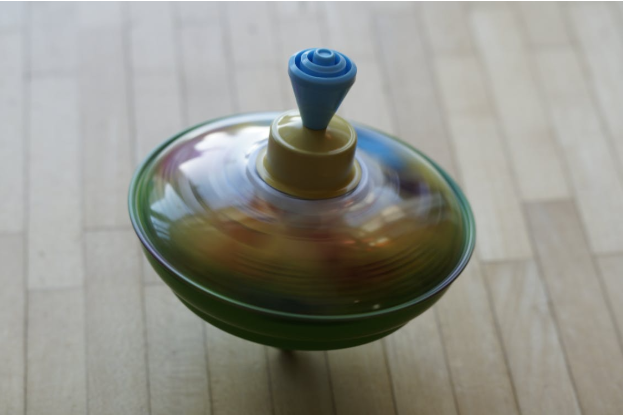There’s something universally soothing about circles. Whether it’s watching a washing machine spin, stirring cream into your coffee, or twirling a fidget spinner between your fingers, circular motion has a hypnotic quality. It draws us in, centers our attention, and makes us feel—oddly—at peace. In today’s digital entertainment landscape, loops and spins aren’t just design flourishes. They’re psychological tools that subtly calm the mind while keeping us engaged.
So, why do loops work so well? And what is it about circular motion that feels so… right?
The Psychology Behind the Spin
Our brains love predictability. Circular patterns are easy to follow and visually pleasing because they represent completeness—no beginning, no end. From a young age, we’re wired to respond to movement that loops. It’s one reason babies are often soothed by rocking, or why a rotating mobile can lull them to sleep. These patterns mimic the natural rhythms of life: breathing, heartbeats, day and night.
In digital experiences, circular motion creates a gentle, continuous flow that’s easy on the brain. Unlike chaotic or erratic designs, loops offer structure. They reduce mental clutter and create space to focus, making them the perfect visual anchor in high-stimulation environments.
From Windmills to Wheels: Motion We Trust
Cyclic motion also connects us to real-world mechanics we instinctively trust. Think about the steady spin of a bike wheel or the hands of a clock. These loops signal progress, momentum, and balance. When entertainment borrows from these familiar visuals—such as reels, spinners, or round timers—it taps into something primal: our brain’s need for rhythm.
Consider online roulette ontario. The entire experience revolves—literally—around circular motion. The wheel spins, tension builds, and resolution arrives smoothly when it stops. Even the anticipation is relaxing in its own strange way, because the loop is controlled. It’s a sensory experience where calm and excitement exist side by side.
Digital Comfort in a Spinning World
In an age where most digital content is fast, sharp, and swipe-heavy, circular motion offers a counterbalance. It slows the pace. Whether it’s a buffering icon spinning (gently reminding us to wait) or a looped animation in a mobile app, these little circles aren’t just visual gimmicks. They’re cues that tell us: “Relax. This is moving in order.”
That’s part of why spins are so prevalent in gaming interfaces and digital environments. They’re not just satisfying to look at—they’re emotionally regulating. In fact, spinning visuals are frequently used in mindfulness and focus apps for this exact reason. You don’t need to think too hard. You just watch the loop, feel the rhythm, and sink into the cycle.
Sensory Sync: Touch, Sight, and Sound
Spins don’t just look good—they feel good. Many apps and games enhance loops with haptic feedback or sound effects that align with the motion. That satisfying “click-click-click” as something spins or locks into place? That’s not accidental. It’s designed to mirror the calming repetition we find in tactile rituals—like snapping a pen or tapping a desk.
With roulette-style visuals, for instance, the spin is often matched with a ticking sound or pulsing vibration. This sensory alignment deepens engagement. Your body subtly joins the loop, reinforcing the experience in your memory.
The Loop as a Ritual
Part of what makes loops so comforting is their predictability. In chaotic or stressful times, knowing what comes next—especially in a visual or kinetic sense—helps us feel grounded. That’s why so many people develop daily “rituals” involving spinning visuals. Whether it’s the morning scroll, a puzzle game on break, or a round of roulette at the end of the day, the loop becomes part of the routine.
Rituals like this offer more than entertainment—they provide mental structure. They act as transitions, marking time and helping us reset. In that way, circular motion becomes more than a visual—it becomes an anchor.
Symbolic Resonance
On a deeper level, circles represent unity and infinity. Many cultures use circular motifs in spiritual practices for a reason. They’re universal symbols of wholeness and protection. This subconscious association carries over into our digital spaces, even if we don’t realize it. When we see something spin, we’re watching a cycle—something dependable and closed. It creates a container for our focus, one that feels safe.
Designers of digital interfaces know this. That’s why so many loading screens, timers, and randomizers are round. They create a controlled environment in the middle of digital chaos.
Why We Keep Coming Back
Once you understand the soothing power of spins, it’s easy to see why loop-based interactions are everywhere. They offer a blend of control, excitement, and calm that’s rare in our overstimulated lives. They don’t shout for your attention—they invite it. And when you respond, the payoff is more than just visual. It’s emotional.
Whether you’re twirling through your favorite mobile app, relaxing with a visual loop, or engaging with online roulette ontario, that circular rhythm is tapping into something deeper. Something timeless.
Final Thoughts
The loop is more than a motion—it’s a mindset. In a culture that prizes speed and disruption, circular design offers pause, pleasure, and peace. We don’t just enjoy watching things spin—we’re drawn to it. It mimics our inner cycles, our routines, our need for structure and predictability.
